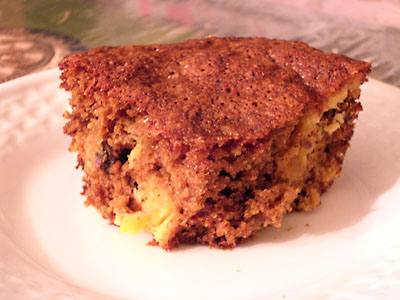East Meets West: Green Tea Cheesecake
Cheesecake is a simple combination of creamy cheese, sugar and eggs. But this common custard (yes, technically it’s not a cake) also has endless varieties. There’s the Creamy: a silky smooth filling that’s baked in a waterbath. Then there’s the New Yorker: a dense, slightly crumbly “cake” with browned edges. There’s also the No-Bake: the cheese sets up in the fridge to resemble mousse. And the Italian: the original cheesecake is made with mealy ricotta.
Up until this year’s Chinese New Year party, there was one last cheesecake I hadn’t tried: the Japanese. Japanese-style cheesecake is almost a misnomer, since it’s part cheesecake, sponge cake, and souffle. My favorite cheesecake is the New York-style, but for those who think traditional cheesecake is dairy overkill, Japanese cheesecake is a good alternative. The tiny air bubbles lighten the cake, but you can still get the cream cheese flavor. As with most Asian desserts, it’s also less sweet than its Western counterpart.
I’ve been craving this novelty ever since trying Fay Da Bakery‘s Japanese cheesecake (and I don’t even like sponge cake!). And green tea’s all the rage at Panya Bakery in the East Village. My friends love their green tea tiramisu and green tea pineapple bun (there’s no pineapple in the bun–the crumbly topping just resembles the fruit). My roommate even suggested that I make green tea filling for my macaroons.
So for my friend Diane’s birthday, I decided to make green tea Japanese-style cheesecake. I adapted a plain Cotton Soft Japanese Cheesecake recipe from Irene at the Diana’s Desserts forum. This is a developing recipe, since Irene posted the recipe with UK measurements. The British bake by weight, rather than us sloppy Americans, who bake by volume. Volume is less exact, because people tend to cram as much flour as they can into a cup. (You’re really supposed to aearate the flour, scoop it into a cup, and level the top off without shaking it.) Improper measuring results in a dense, dry cake.
I steeped four tea bags into the batter and found there was no green tea flavor. So I finely processed the leaves from another bag and added it straight to the batter. The green tea flavor emerged, but it wasn’t as strong as I would have liked. So I estimate that six green tea bags is good.
Also, the original called for corn flour. In the U.S., corn flour is finely processed corn meal (the stuff in corn bread). However, in the U.K., corn flour is corn starch. They’re two completely different things! I used corn flour but got clumps. I think I was supposed to use corn starch.
Green Tea Japanese Cheesecake
Adapted from Irene’s Cotton Soft Japanese Cheesecake recipe
140g (2/3 cup) fine granulated sugar
6 egg whites
6 egg yolks
Hint: Eggs separate easier when they’re cold, but the whites whip better at room temperature.
1/4 tsp cream of tartar or 1/2 tsp white vinegar or 1/2 tsp lemon juice
100 ml (3/8 cup) milk
6 green tea bags
50g (1/2 stick) butter
250g (1 8-oz. package + 1 tbsp) cream cheese
1 tbsp lemon juice
60g (3/7 cup) cake flour
Hint: 1 cup cake flour equals 1 cup minus 2 tablespoons all-purpose flour, plus 2 tablespoons cornstarch.
20g (1/4 cup) corn starch
1/4 tsp salt
Preheat oven to 325 F. Lightly grease and line the bottom and sides of an 8-inch round cake pan with greaseproof baking paper or parchment paper. If using a springform pan, line the outside with foil so the batter doesn’t leak out.
Scald the milk in a saucepan, preferably to 180 F. Do not let the milk boil, or it will make the tea bitter. Pour the milk in a cup and steep the tea for for 2-3 minutes. Remove the tea bags and squeeze out as much liquid as possible.
Melt cream cheese, butter and milk-tea mixture over a double boiler. Cool the mixture.
Combine the flour, corn starch and salt in a small bowl.
To the cream cheese mixture, fold in the flour mixture, egg yolks, 1 tbsp lemon juice and mix until smooth. If lumps remain at this stage, they will not come out later.
Beat egg whites with cream of tartar (or vinegar or lemon juice) until foamy. Add in the sugar and beat until soft peaks form.
Lighten the cheese mixture by mixing it with 1/3 of the egg white mixture.
Add the rest of the egg white mixture to the cheese mixture and gently fold. The batter should be well combined.
Bake cheesecake in a water bath (the water should be warm but not boiling) for 1 hour and 10 minutes or until set and golden brown on top.
My cheesecake came out wondrously smooth and puffy. Then it pulled away from the sides of the pan, and the top wrinkled as the cake shrunk.
Serving suggestion: garnish with a scoop of lychee sherbet (my favorite combination!), red bean ice cream, green tea ice cream, or mango sorbet (pictured).
This cake was subtly sweet and lightly buttery/cheesy. It wasn’t as good as Fay Da’s (I got more crumbs than spongy bubbles), but I think it’s because I accidentally used corn flour instead of corn starch.



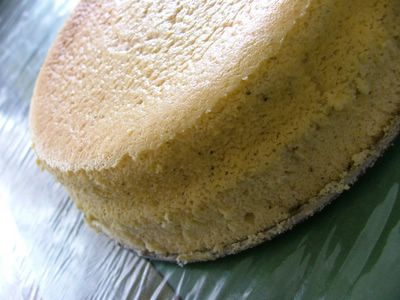
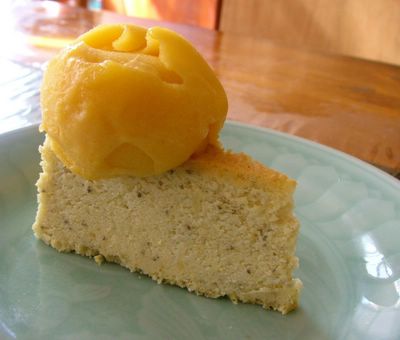


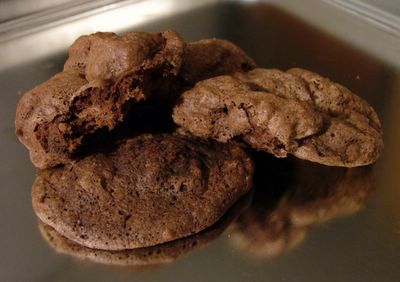
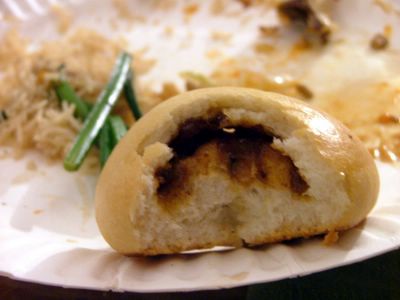
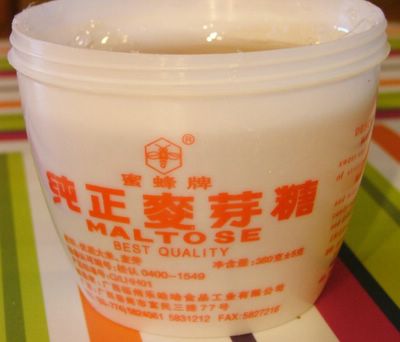
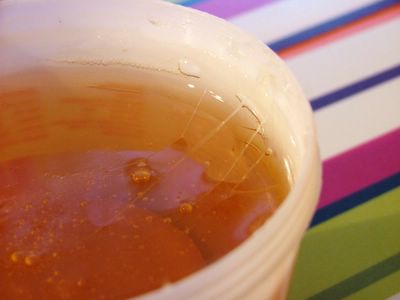
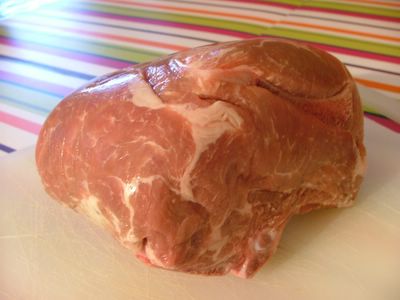
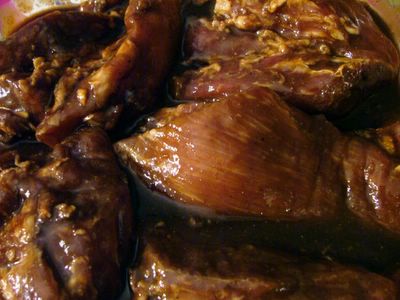
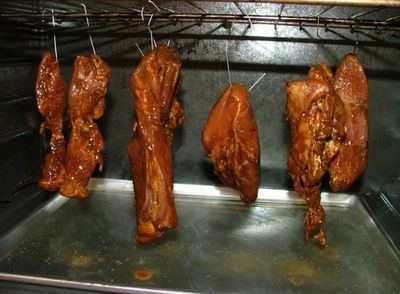
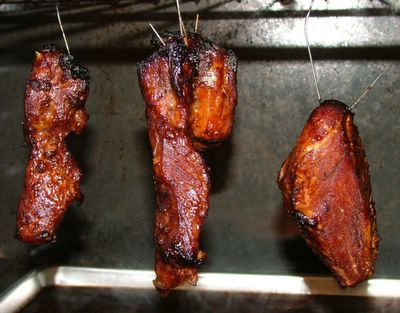

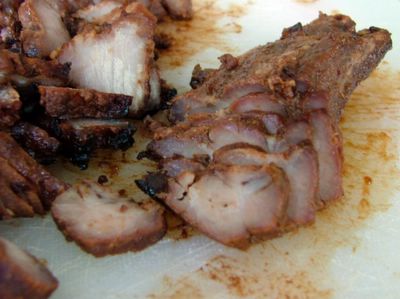
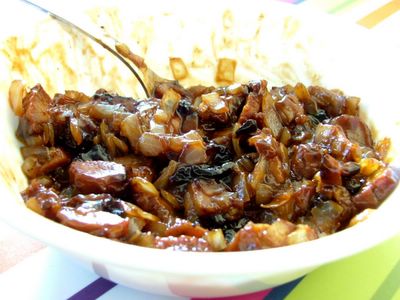
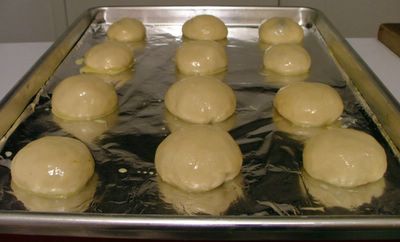
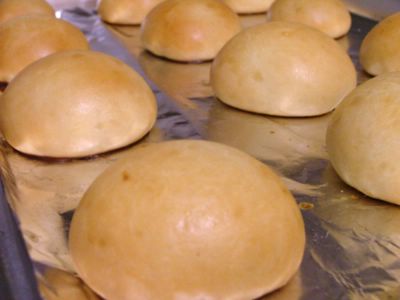
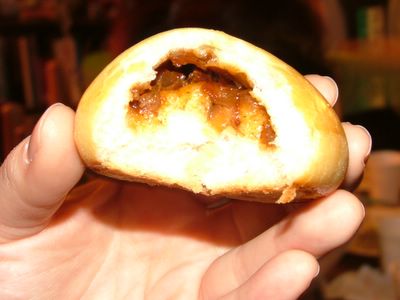

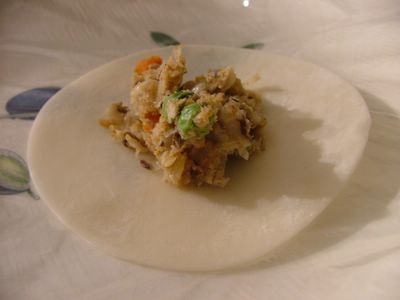
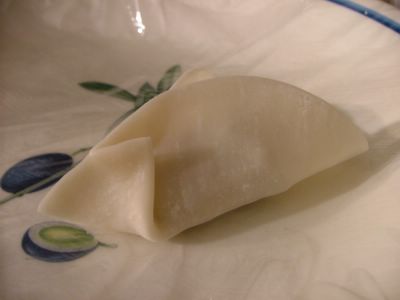
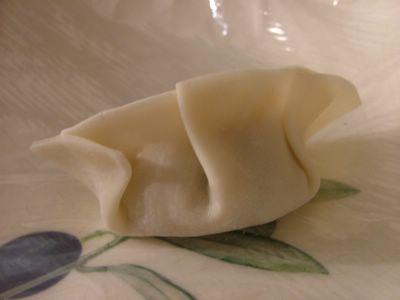




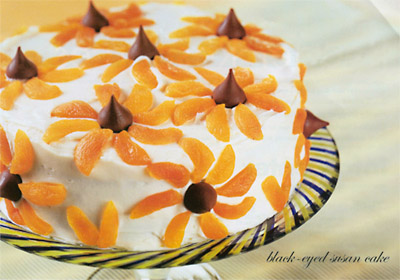
 Ooh, nice and crusty! While this cake was baking, the entire kitchen smelled like gingerbread.
Ooh, nice and crusty! While this cake was baking, the entire kitchen smelled like gingerbread.